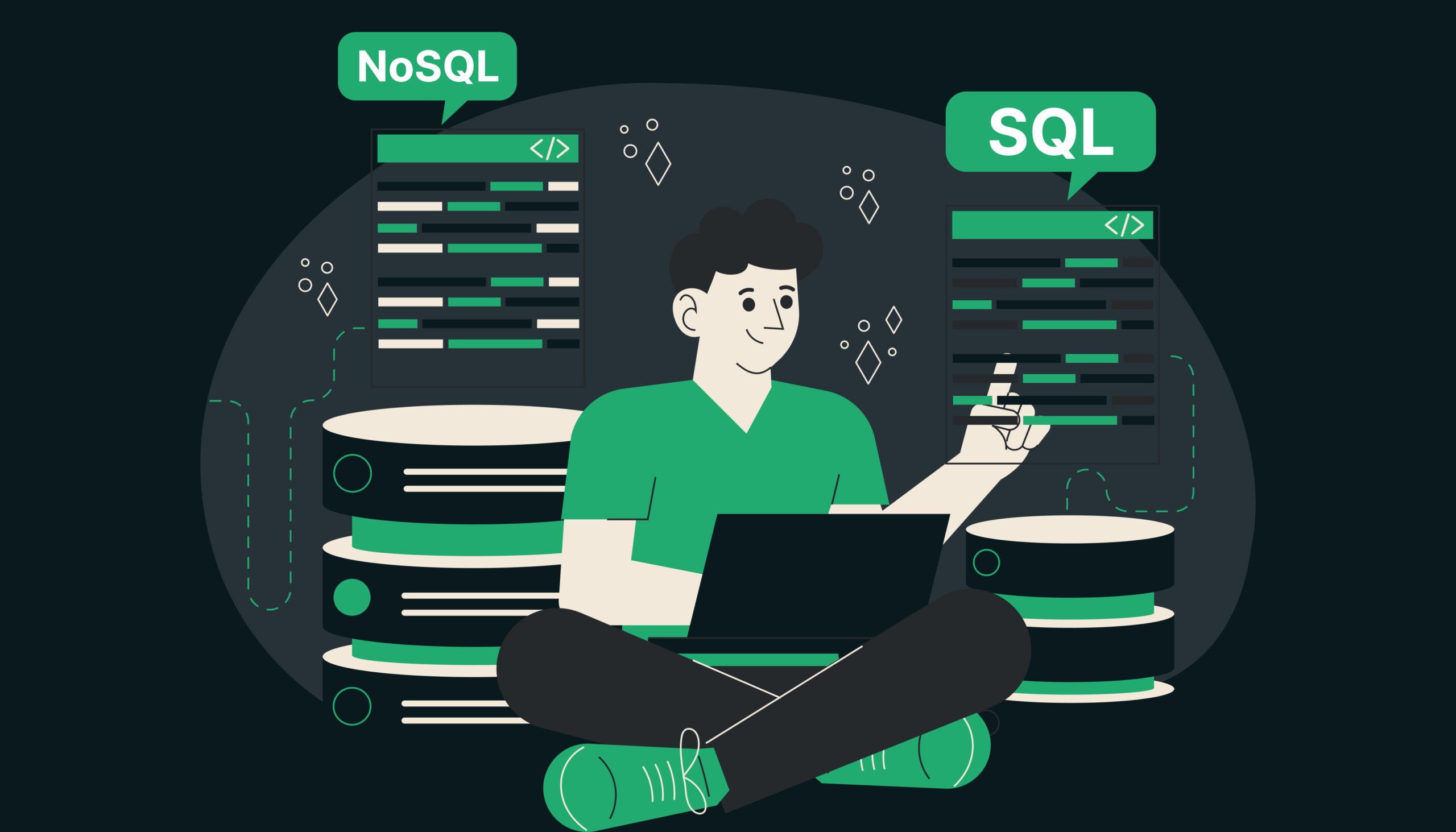BIG DATA ANALYSIS: SQL Or NoSQL?
What exactly is SQL?
SQL is an abbreviation for Structured Query Language. SQL allows you to access and manage databases. It was adopted as an American National Standards Institute (ANSI) standard in 1986 and as an International Organization for Standardization (ISO) standard in 1987.
What Does SQL Have to Offer?
- SQL can run queries against databases.
- SQL may get information from a database.
- SQL may enter data into a database.
- SQL may be used to update database records.
- SQL has the ability to delete records from a database.
- SQL has the ability to build new databases.
- SQL may add additional tables to a database.
- SQL may be used to build stored procedures in a database.
- SQL may generate database views.
- SQL may grant access to tables, procedures, and views.
Despite the fact that SQL is an ANSI/ISO standard, there are several variations of the SQL language.
To be ANSI compatible, they must all support at least the major commands such as:
(SELECT, UPDATE, DELETE, INSERT, WHERE)
Considerations when choosing a SQL or NoSQL database:
1. Structure of data:
The first and most important consideration in deciding between SQL and NoSQL is the nature of your data.
If your data is mostly organized, a SQL database is probably the best option.
A SQL database is ideal for transactional systems such as customer relationship management software, accounting software, and e-commerce platforms. In a SQL database, each row represents a different entity (for example, a customer), and each column represents an attribute that characterizes that entity (e.g. address, job title, item purchased, etc.).
SQL databases are ideal for ACID compliance because of their clear, organized connections between rows and columns in a table. ACID is an abbreviation for:
ATOMICITY- Atomicity means that each transaction either totally succeeds or is completely rolled back.
CONSISTENCY- Data written to a database must be consistent with all stated rules.
ISOLATION – When transactions are executed concurrently, they do not compete with one another and behave as if they were executed sequentially.
DURABILITY – A transaction is deemed permanent after it has been committed to the database, even if the system fails.
ACID compliance safeguards your data’s integrity by defining what a transaction is and how it interacts with your database. It keeps database tables from becoming out of sync, which is critical for financial transactions. ACID compliance ensures transaction validity even in the face of mistakes, technological failures, catastrophic events, and other occurrences.
>>SQL is an excellent choice if your data is well organized and ACID compliance is required.
>>If your data needs are unclear or your data is unstructured, NoSQL may be your best choice.
2. Data querying ability:
The second thing to think about is how frequently you’ll query your data, how rapidly you need to perform queries, and who will be in charge of conducting these queries.
Because your data is well-structured and ordered, querying it with a SQL database is incredibly efficient.
SQL is a well-known and widely used computer language that has been around for almost 45 years. It speedily conducts searches and swiftly obtains and updates data. It’s lightweight and declarative, making it simple to learn. As a result, queries may be conducted by less technical personnel, such as business analysts and marketers.
A NoSQL database gives you a lot of freedom in terms of the sorts of data you may store, but querying isn’t as efficient as it is with a SQL database due to potentially substantial variances in data formats.
When NoSQL database technology was first developed, developers prioritized scalability and flexibility over query performance.
So, in order to conduct NoSQL queries, you will need to do additional data processing. You may need to build some degree of MapReduce depending on the NoSQL database you’re using. Many developers build capabilities at the database layer, others build them into the application layer. Some attempts have been made to standardize NoSQL querying, such as with XQuery or JSONiq, however, these tools have not been generally used.
3. Scaling:
SQL and NoSQL databases scale differently, so you’ll need to consider how your data set will expand in the future.
SQL databases expand vertically, which means that to scale your database, you’ll need to increase the capacity of a single server (by boosting CPU, RAM, or SSD). SQL databases were meant to run on a single server to ensure data integrity, therefore they are difficult to scale.
Because NoSQL databases scale horizontally, you may add more servers to power your expanding database. This is a significant benefit of NoSQL over SQL.
The ability of NoSQL databases to scale horizontally is due to their lack of data structure.
Because NoSQL requires far less structure than SQL, each stored object is mostly self-contained and automatic. Objects may therefore be simply kept on several servers without being connected. This is not the case with SQL, which requires each table row and column to be connected.
A wedding cake is a good reference for vertical and horizontal scaling. By adding extra layers to the wedding cake, you can feed more people with SQL. You may simply create a slew of wedding cupcakes with NoSQL.
The Bottom Line:
When it comes to cloud data storage, there are several options to consider. One of the most crucial considerations to make is whether to use a SQL or NoSQL database as your primary database and whether you may need both.
You’ll need to consider the format of your data, how you’ll query it, and the scalability you’ll want suitable in the future.
Zenkoders provides their clients with the best requirements for whether the usage of SQL is required in the database or not, to lessen the burden on their potential customers. SQL databases offer significant advantages for transactional data whose structure does not change frequently (if at all) and where data integrity is critical. It is also ideal for quick, analytical questions. NoSQL databases are far more flexible and scalable, allowing for faster development and iteration.


